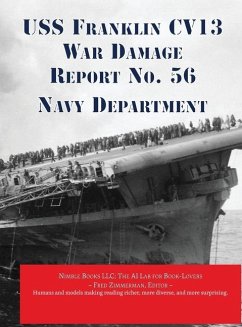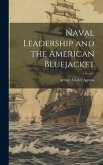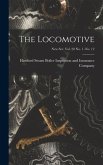Familiarity with the history of damage control for fires on aircraft carriers will likely be a crucial proficiency for naval professionals and navalists throughout the world when the next war in the Pacific occurs. The Franklin was the most heavily damaged US carrier to survive an attack. Its official story is instructive, inspiring, and essential. This 1945 document provides a detailed account of the damage sustained by the USS Franklin CV during two separate actions in October 1944 and March 1945. The damage was primarily caused by suicide plane crashes and bombing attacks, resulting in severe fires and explosions on the ship. The document highlights the effectiveness of the ship's firefighting systems in the first action but notes that they were overwhelmed in the second action. It emphasizes the importance of effective damage control efforts and training to eliminate fire hazards and rapidly extinguish fires. The document also discusses recommendations for improvements in damage control techniques and equipment, including better access and escape routes, improved drainage systems, and the relocation of certain facilities. Overall, the document emphasizes the major hazards faced by aircraft carriers, particularly the threat of fire, and the need for continuous efforts to prevent and extinguish fires. As a bonus, a twenty-page 1942 report on the loss of USS Wasp (CV7) to submarine torpedoes is also included. This annotated edition illustrates the capabilities of the AI Lab for Book-Lovers to add context and ease-of-use to manuscripts. It includes five types of abstracts, building from simplest to more complex: TLDR (one word), ELI5, TLDR (vanilla), Scientific Style, and Action Items; three essays to increase viewpoint diversity: Grounds for Dissent; Red Team Critique; and MAGA Perspective; and Notable Passages and Nutshell Summaries for each page.
Hinweis: Dieser Artikel kann nur an eine deutsche Lieferadresse ausgeliefert werden.
Hinweis: Dieser Artikel kann nur an eine deutsche Lieferadresse ausgeliefert werden.








